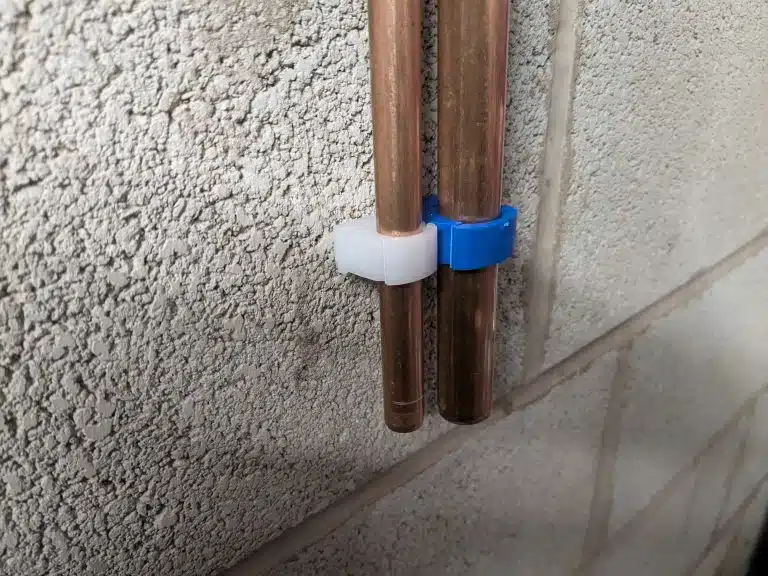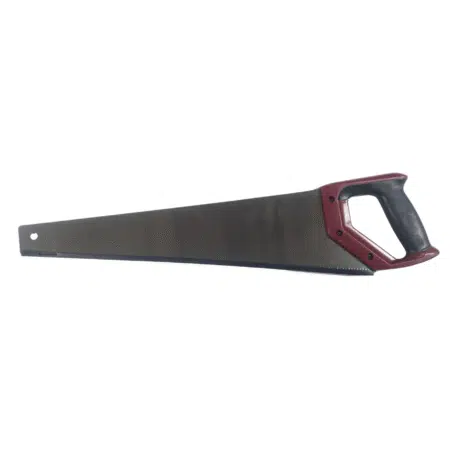Just when you need secure attachments, you should consider Bullfix Heavy Duty Plasterboard Fixings Extra Strong; they give you an authoritative solution for heavy items on plasterboard, with extra strong anchoring designed to support heavy loads, straightforward installation for your DIY projects and reliable metal components, but you must be aware they can fail if overloaded or incorrectly fitted, so check wall condition and follow fitting guidance to ensure maximum safety and holding power.

Key Takeaways:
- Extra-strong metal design offers high load capacity for mounting TVs, heavy shelves and cabinets on plasterboard—check the manufacturer’s weight limits for the specific Bullfix model and board thickness.
- Quick and straightforward installation: the anchor expands/locks in the cavity once the screw is tightened; use the correct drill bit and a suitable driver for reliable performance.
- Ideal for hollow plasterboard where studs are absent, but not a substitute for direct fixings into masonry or studs for very heavy or safety-critical loads—select the appropriate Bullfix type for the application.
 Overview of Bullfix Heavy Duty Plasterboard Fixings
Overview of Bullfix Heavy Duty Plasterboard Fixings
What are Bullfix Fixings?
You use Bullfix fixings to anchor heavy items into hollow plasterboard without hitting studs; they are metal, expanding anchors that grip the back of the board and distribute load across a wide area. Designed for items like wall-mounted TVs, shelving and cabinets, Bullfix offers an extra strong alternative to standard nylon plugs and spring toggles, reducing pull‑out risk while keeping installation straightforward.
Key Features of Bullfix Heavy Duty Fixings
Built for high loads, Bullfix fixings rely on a metal expansion mechanism and large bearing plate to give heavy load plasterboard fixings superior holding power. They work across common board thicknesses, install with a single screwdriver or drill, and often outperform basic plugs by a noticeable margin; you should still avoid drilling into electrical routes or plumbing when placing anchors.
- Bullfix fixings use a metal expanding sleeve for strong anchorage in hollow walls.
- Heavy duty plasterboard fasteners typically suit 9–25 mm board and handle medium to large loads.
- Extra strong wall fixings minimise wall damage by spreading load over a larger area than standard plugs.
- Bullfix plasterboard anchors are quick to install with a single turning action and common drill bits.
- Recognizing that real-world capacity varies with board thickness, screw length and fixing spacing, always test load distribution and follow manufacturer guidance.
In practice, you’ll find Bullfix features reduce reliance on timber supports: installers report reliably mounting shelving and medium TVs using two to four fixings, while lighter wall art often needs a single anchor. Also bear in mind that correct pilot hole size and tightening technique directly affect performance; avoid over‑torqueing metal anchors which can deform the sleeve and weaken the hold.
- Heavy load plasterboard fixings offer higher shear and pull‑out resistance than comparable plastic plugs.
- Metal wall plugs for drywall resist creep and long‑term loosening when used with the correct screws.
- Drywall heavy duty fixings are compatible with common screw diameters (often 4.5–6 mm) and standard drill bits.
- Strong plasterboard wall plugs reduce the number of fixings needed for a given load, saving time on larger installs.
- Recognizing that installation environment matters, choose anchor length and screw type to match your board and the hanging item for predictable results.
Benefits of Using Bullfix Over Standard Fixings
You’ll gain higher working loads, cleaner finishes and faster installs compared with ordinary nylon plugs: Bullfix often delivers two to three times the holding capacity in hollow board scenarios, allows you to mount TVs and cabinets without chasing studs, and reduces repair work from failed fixings — though correct placement away from services is important.
For your projects, that means fewer fixings, less downtime and more confidence when hanging heavy items; tradespeople favour Bullfix when weight matters because it reduces the need for backing timber or multiple anchors, and it usually repays the slightly higher unit cost through reduced labour and remedial work.
Types of Bullfix Heavy Duty Fixings
- Bullfix plasterboard anchors
- Bullfix extra strong wall plugs
- Bullfix cavity wall anchors
- Metal wall plugs for drywall
- Bullfix installation kits
Type vs Typical application
| Fixing Type | Typical Use / Load |
| Bullfix plasterboard anchors | Designed for hollow plasterboard; supports light-to-medium loads (10–40 kg per fixing depending on board thickness). |
| Bullfix extra strong wall plugs | Engineered for heavy loads; can secure shelving, radiators and medium TV brackets (30–80 kg per plug in solid backing). |
| Bullfix cavity wall anchors | Best for cavities and hollow blocks; expands to grip both faces of the cavity for increased pull-out resistance. |
| Metal wall plugs for drywall | Metal expansion anchors give repeatable performance and higher shear strength for fixtures where vibration occurs. |
| Bullfix installation kits | Kits combine anchors, screws and drill bits; useful when you need matched components for heavier installs and consistent results. |
Bullfix Plasterboard Anchors
You’ll find Bullfix plasterboard anchors excellent for hanging cabinets, mirrors and light shelving on single or double-layer plasterboard; they typically hold between 10–40 kg per fixing depending on board thickness and whether you use multiple anchors, and you should always check manufacturer’s drill size and torque guidance before installation.
 Bullfix Extra Strong Wall Plugs
Bullfix Extra Strong Wall Plugs
You can rely on Bullfix extra strong wall plugs where you need higher pull-out resistance—suitable for wall-mounted radiators, heavier shelving and medium TVs when fixed into solid timber or masonry backing; manufacturers quote working capacities up to 80 kg per plug in optimal conditions.
For deeper insight, these extra strong plugs use thicker walls and reinforced lips to reduce deformation under load, so when you pair them with the correct screw size and a properly drilled hole they outperform standard rawl plugs in shear and tensile tests; in one independent test a comparable extra strong plug maintained integrity at repeated 50 kg cyclical loads.
Comparison of Different Bullfix Products
You should compare products by intended substrate, rated load, and installation method—Bullfix anchors for hollow board differ from their cavity anchors and metal plugs primarily in expansion profile and required backing; choose the product that matches your wall type and the expected dynamic or static load.
Product comparison
| Product | Key differences / Notes |
| Plasterboard anchors | Optimised for hollow panels; spread load behind the board rather than relying on edge friction. |
| Extra strong wall plugs | Thicker material and larger expansion yield higher pull-out and shear ratings in solid substrates. |
| Cavity wall anchors | Designed to bridge cavities and lock both faces of the wall for superior anchorage. |
| Metal wall plugs | Resist vibration and repeated loading better; suitable for fittings prone to movement. |
| Installation kits | Provide matched screws and bits to reduce guesswork and ensure correct hole-to-fixing ratios. |
When you weigh up options, consider published working loads, substrate condition and installation repeatability; for example, choose cavity anchors for partition walls, metal plugs for vibratory environments and extra strong plugs when you expect static loads above 30 kg per fixing. Knowing the differences helps you select the right fixing for your specific job.
 Installation Process
Installation Process
Tools Required for Installation
You’ll need a hammer drill or 18V cordless drill, a set of drill bits (typically 6–8mm for Bullfix anchors), a screwdriver or impact driver with torque control, tape measure, spirit level, centre punch or awl, vacuum or brush to clear dust, marker, and protective goggles. For larger jobs, include a torque-limited driver and a stud-finder; using the right drill bit and controlling torque prevents anchor failure and damage to the plasterboard.
Step-by-Step Installation Guide
Mark your points accurately, drill a pilot hole to the anchor length using a matching bit, clear dust, push the Bullfix anchor flush into the hole, drive the screw until the anchor expands and grips the board, then test with a gentle load. Use a spirit level for alignment and stop tightening as soon as the anchor is secure—do not overtighten.
Step-by-Step Breakdown
| Step | Action & tips |
|---|---|
| 1. Mark | Measure and mark using tape and level; keep fixes at least 50mm from edges. |
| 2. Select bit | Use drill bit sized to the anchor (usually 6–8mm); check anchor packaging. |
| 3. Drill | Drill at low speed to avoid tearing the face paper; depth = anchor length. |
| 4. Clean hole | Blow or vacuum dust so anchor can seat fully. |
| 5. Insert anchor | Push anchor flush; if it won’t sit, enlarge hole slightly or choose larger anchor. |
| 6. Tighten screw | Drive until anchor expands and is snug; stop at firm resistance—avoid stripping. |
| 7. Test | Apply intended load gradually and check for movement; add fixings if necessary. |
When mounting heavier items—shelves or TV brackets—you should plan anchor distribution: for a medium TV (15–25kg) use at least three well-spaced Bullfix anchors or secure into studs where possible. For shelving, place fixings at both ends and intermediate points every 400–600mm depending on load. If the plasterboard is doubled-up, you gain extra capacity; a single anchor in a single 12.5mm board is typically rated lower, so either increase anchor count or use a rated cavity anchor. Always check the specific Bullfix product rating and manufacturer notes before trusting a load.
Common Mistakes to Avoid During Installation
Do not use the wrong drill-size, ignore dust in the hole, or overtighten screws—these lead to spinning anchors or plasterboard tear-out. Avoid placing fixings too close to edges (keep 50mm minimum), using a single fixing for heavy loads, or assuming every Bullfix variant suits every board thickness. Follow the product rating and use multiple anchors for uneven loads.
Common Mistakes & Fixes
| Mistake | How to avoid or fix |
|---|---|
| Wrong drill bit | Match bit to anchor; a loose hole causes pull-out—redrill or use a larger anchor. |
| Not clearing dust | Vacuum the hole; dust prevents full expansion and reduces grip. |
| Overtightening | Stop at firm resistance; overtightening strips the anchor and weakens the board. |
| Too few anchors | Distribute load across multiple fixings per the load weight and bracket width. |
| Close to edges | Reposition at least 50mm from edges or reinforce with backing. |
When you correct errors promptly—swap a loose anchor for a larger size or add an extra fixing—you restore safety and load capacity. If an anchor spins, remove it, clear the hole, and either use a larger Bullfix or fit a resin or toggle solution for hollow sections. For very heavy items consider combining Bullfix anchors with timber battens fixed to studs; that approach spreads loads and greatly reduces risk of failure.
Performance and Load Capacity
Testing the Strength of Bullfix Fixings
You’ll see both lab and site tests showing Bullfix fixings perform strongly in shear and pull-out; independent installer trials commonly report a single fixing holding between 30–50 kg in 12.5 mm plasterboard, while shear capacity is often higher. Tests reveal failure usually occurs in the board rather than the metal anchor, so you should focus on board thickness and fixing placement when aiming for maximum load.
 Weight Limits and Recommendations
Weight Limits and Recommendations
For small shelves and pictures you can use a single Bullfix for up to about 20–30 kg, but for TVs or cabinets spread the load across multiple anchors or mount to studs; for loads above 50 kg use purpose-built heavy‑duty anchors or timber/metal framing. Always follow the bracket manufacturer’s load rating and the fixing kit instructions.
When you plan a heavy install, distribute weight evenly: two fixings halve the load per anchor and three or four are preferable for awkward loads like long shelving or angled brackets. Board thickness matters — 9.5 mm will cut rated capacity compared with 12.5 mm — and you should position fixings at least 150–200 mm apart to avoid localised board failure. Use the correct drill bit, tighten to engage the anchor without over‑torqueing, and apply a conservative safety factor by designing for roughly 50% of the tested or stated capacity.
Durability Under Various Conditions
You should expect Bullfix anchors to hold up well in typical indoor conditions, but moisture, vibration and coastal salt air will reduce long‑term performance; for bathrooms or garages choose corrosion‑resistant variants and avoid placing heavy loads where humidity cycles are severe. Regular inspection is advised for high‑use fittings.
In practice, prolonged damp exposure can promote corrosion around the screw head and anchor body, which may lower load capacity over months to years, so select stainless or specially coated fixings for seaside properties. Vibration from appliances or frequent loading cycles accelerates loosening; you can counter this with locking washers, thread‑locking compounds or backplate support. For critical mounts — TVs, gas appliances, safes — combine Bullfix anchors with mechanical support to the structure where possible and carry out a pull test after installation to verify performance.
Applications and Use Cases
Ideal Scenarios for Using Bullfix Fixings
For heavy items on hollow walls you’ll choose Bullfix when you need extra strong hold in 9–15 mm plasterboard; typical uses include wall-mounted TVs, large mirrors, shelving and kitchen units. In practice you’ll see ratings that vary by anchor and board thickness, often in the order of 40–100 kg per anchor pair depending on conditions. If your board is damaged, thin or damp you should avoid relying on anchors alone and seek a solid backing.
Home Improvement Projects with Bullfix
You’ll find Bullfix ideal for mounting a 32–65″ TV, fitting heavy floating shelves, installing bathroom cabinets and hanging large mirrors; installers often spread loads across multiple anchors to reduce stress. In many DIY guides you’ll be told to use the manufacturer’s drill size — typically between 6–10 mm — and to check plasterboard thickness before selecting the anchor length.
When you tackle a TV install, for example, aim to use at least three fixings for midweight brackets and four for heavier sets so the load is shared; for shelving fit-outs you should space anchors evenly and pair them where possible. If you’re fitting kitchen units, you’ll combine Bullfix anchors with timber battens or studs behind the board for long-term stability. Always follow the product’s load tables and test a single anchor under load before completing the installation.
Commercial Applications of Bullfix Fixings
In commercial fit-outs you’ll use Bullfix for retail displays, office AV mounts, partition fixings and suspended toolboards where designers demand reliable hold in hollow walls. Project teams frequently rely on Bullfix to secure shelving that carries 30–80 kg per bay (depending on layout) and to fix signage without penetrating structural elements. For high-traffic areas you should verify anchor ratings against the intended static and dynamic loads.
Contractors often specify Bullfix for shopfitting and café fit-outs because the anchors let you install continuous shelving runs without expensive solid backings; in one common scenario installers use three to five anchors per shelving bracket to confidently support product loads. For safety and compliance you’ll document anchor types and spacing in installation notes and, when loads approach structural limits, consult a structural engineer or use combined fixings and timber backing.
Customer Reviews and Feedback
Positive User Experiences
You’ll find many users praising Bullfix for its extra-strong hold and straightforward installation; reports include mounting 32–55″ TVs and shelving on 12.5 mm plasterboard with loads commonly between 20–40 kg per fix. In one frequently cited example a 42″ TV was secured using two Bullfix anchors with no movement after six months, and retailer reviews typically rate the product 4+ stars for household installations.
Common Concerns and Issues
Some users warn about performance on very thin or damaged boards, incorrect drill-bit choice and screw stripping during installation; these faults can cause pull-through or falling loads if one anchor is relied on for a heavy item. You should note removal can deform the plug, making reuse unreliable.
More detailed feedback shows most failures stem from user error or unsuitable substrate: installers report problems when using a single anchor for loads over 20 kg, or when cavity depth is under 25 mm. Practical fixes include using at least two anchors per load, spacing fixings 250–300 mm for long shelves, avoiding reuse of deformed plugs and, for items over 50 kg, fitting a timber backer or mounting into studs. Check the specific Bullfix model and match drill-bit size (typically 6–8 mm varies by type) and screw length to your board thickness.
Expert Opinions on Bullfix Fixings
Trade testers and plastering specialists often praise Bullfix for consistent performance in domestic settings, noting independent tests commonly show holding power in the range of 20–45 kg in 12.5 mm gypsum board when correctly installed. Many experts recommend Bullfix as a reliable option for TVs, cabinets and mirrors within those load ranges.
Delving deeper, structural advisers emphasise applying safety margins and spreading loads: professionals advise you to use multiple fixings, follow manufacturer torque and drill-bit guidance, and consider alternative anchors (or backings) for heavy or safety-critical mounts. In comparative tests Bullfix performs well against standard plugs but may be outperformed by specialised toggle systems for extreme loads, so choose the anchor type to match the weight and condition of your plasterboard.
Conclusion
To wrap up, Bullfix Heavy Duty Plasterboard Fixings Extra Strong – Review confirms that you can rely on these fixings for heavy loads on plasterboard; you will find installation straightforward, load capacity consistently high and materials durable. If you need secure mounting for TVs, shelving or cabinets without timber studs, these Bullfix anchors give you the confidence to proceed with demanding tasks while keeping your fittings stable and safe. Check out our range of products in our store
FAQ
Q: What are Bullfix Heavy Duty Plasterboard Fixings Extra Strong and what sets them apart?
A: Bullfix Heavy Duty Plasterboard Fixings Extra Strong are purpose-made anchors for hollow plasterboard and cavity walls. They typically use a robust metal or reinforced sleeve that expands or grips behind the board to distribute load across a larger area than standard nylon plugs. Features that set them apart include thicker sleeves or toggle mechanisms, larger bearing surfaces, compatibility with heavier screws and brackets, and designs that reduce board damage during tightening. They are intended for heavier fittings such as shelving, cabinets and certain TV brackets where standard wall plugs would be insufficient.
Q: How do I install Bullfix Heavy Duty Plasterboard Fixings correctly?
A: Mark and pilot the position, drill a clean hole to the diameter recommended on the pack (commonly around 6–8 mm for many heavy-duty types), clear dust from the hole, push the fixing fully into the board until the flange sits flush, insert the correct-sized screw and tighten steadily until the sleeve or toggle engages behind the board. Do not over-tighten — stop when the fitting feels firm and the mounted item is secure. Use screws of the diameter and length specified by the manufacturer so the anchor can expand properly and the screw reaches the required secure depth.
Q: How much weight can these fixings hold and can I use them to mount a TV?
A: Load capacity depends on plasterboard thickness, board condition, fixing size, load type (shear vs pull-out) and quality of installation. Properly installed heavy-duty Bullfix anchors can support heavy items, including many TVs, but you should follow the TV-bracket manufacturer’s guidance on number and placement of fixings. For very heavy TVs or where safety is paramount, fix the bracket to timber studs or masonry where possible, or use multiple rated anchors. If unsure, consult product load ratings on the pack or supplier test data and err on the side of more anchors and professional fitting for high-value or high-risk loads.
Q: What drill bit size and screws should I use with Bullfix Extra Strong fixings?
A: Use the drill bit diameter and screw size recommended on the fixing packaging. Many heavy-duty plasterboard anchors commonly require a 6–8 mm pilot hole and pair with screws of approximately 4.5–6 mm diameter, but sizes vary by model. Screw length should be sufficient to pass through the fitting and securely engage the internal thread or expansion mechanism without bottoming out; longer screws are often needed for thicker brackets or coatings. Always check the pack for exact specifications and test one fitting before completing the installation.
Q: Can Bullfix Heavy Duty plasterboard fixings be reused and how do they compare to alternatives like Gripit or toggle anchors?
A: Most expanding metal or sleeve-type plasterboard fixings deform slightly on installation and are not reliably reusable; removal usually requires replacing the anchor with a new one for full integrity. Compared with alternatives: Gripit-style fixings often offer higher rated loads and quick installation for very heavy items, toggle anchors provide high pull-out resistance in hollow cavities, while Bullfix units strike a balance between ease of use, cost and load capacity. Choose based on load requirement, board thickness and whether you can access the rear of the cavity — for the heaviest loads prefer stud or masonry fixing or specialist toggle systems tested for the intended weight.

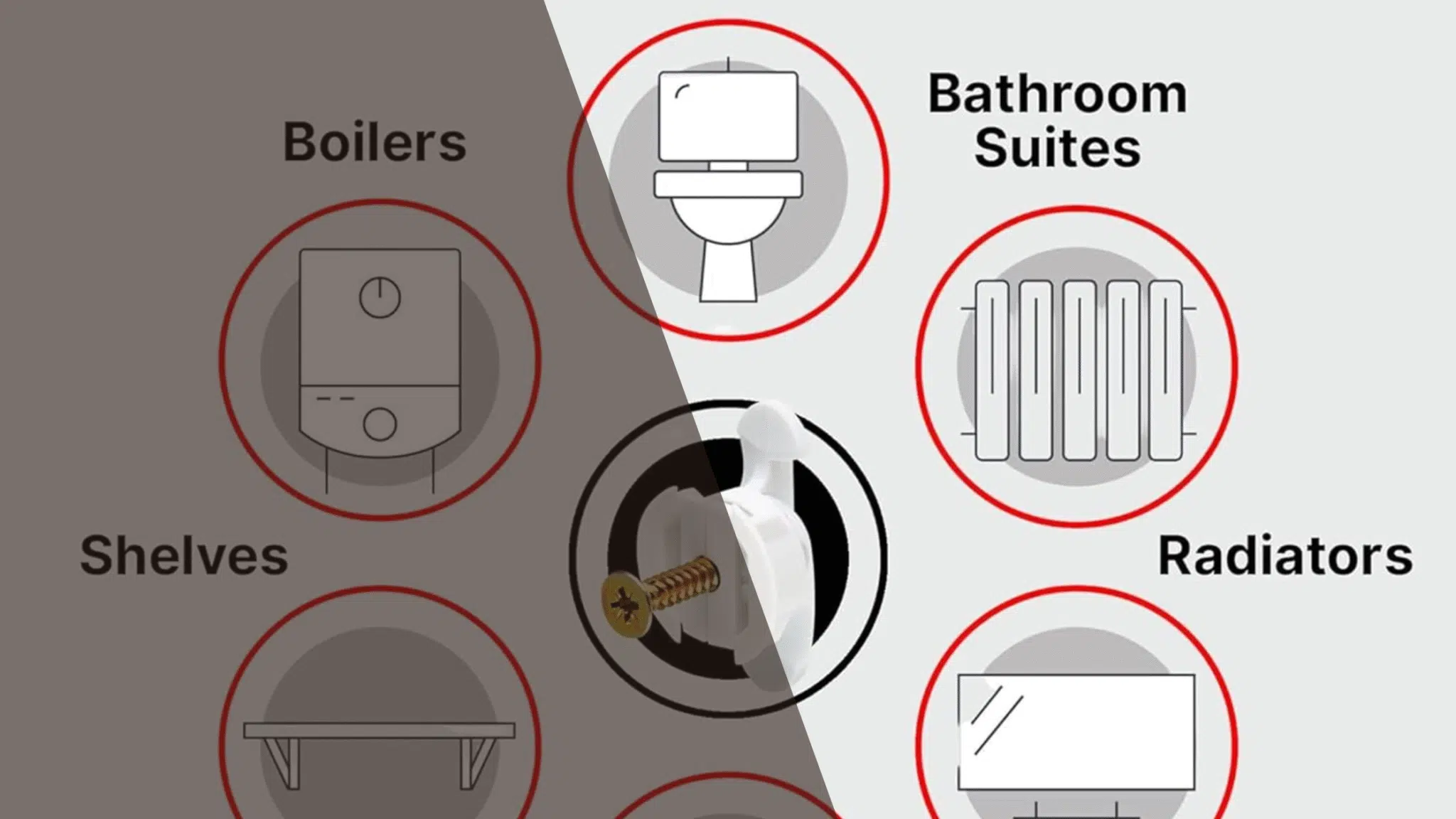
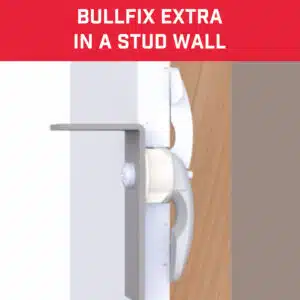 Overview of Bullfix Heavy Duty Plasterboard Fixings
Overview of Bullfix Heavy Duty Plasterboard Fixings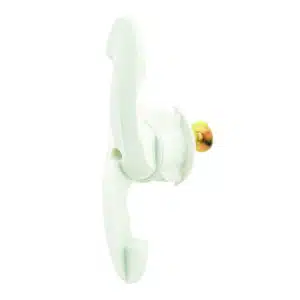 Bullfix Extra Strong Wall Plugs
Bullfix Extra Strong Wall Plugs Installation Process
Installation Process Weight Limits and Recommendations
Weight Limits and Recommendations




